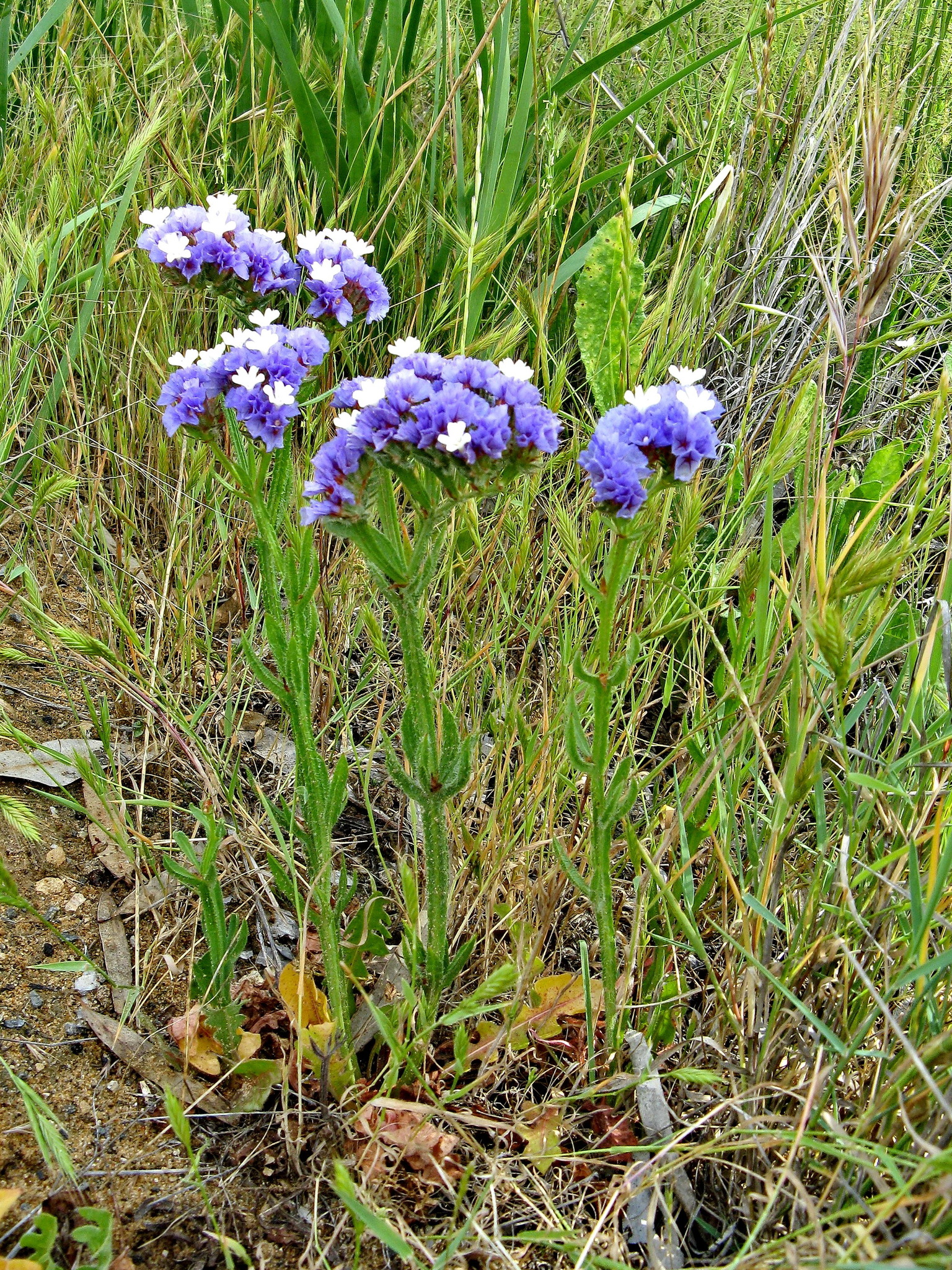
Mostly annual or perennial herbs, occasionally shrubs or climbers. Leaves alternate, simple, entire or lobed; stipules absent. Flower clusters branched or in spikes or heads. Flowers radially symmetrical, bisexual, 5-parted. Sepals with a 5 or 10-ribbed tube, each rib with a small lobe, often petal-like, papery and showy. Petals generally united, at least at the base, or tubular, often persistent. Stamens 5, free or fused to the base of and in front of the petals; anthers opening by longitudinal slits. Carpels 5, united. Ovary superior, containing 1 chamber with a single basal ovule. Styles 5 or 5-lobed. Fruit a capsule or achene enclosed by the persistent calyx.
A family that is considered to have no close relatives.
Extracts have been used medicinally to treat skin diseases and dental ailments. Tannins and dyes have been extracted from Limonium.
Stamens as many as petals and on the same radius; ovary with a basal ovule.
About 30 genera and 710 species, cosmopolitan, often alpine but also frequent in coastal habitats such as saltmarshes and on limestone (Australia has 3 genera and 9 species).
Source: (1997). Plumbaginaceae. In: . Horticultural Flora of South-eastern Australia. Volume 2. Flowering plants. Dicotyledons. Part 1. The identification of garden and cultivated plants. University of New South Wales Press.
